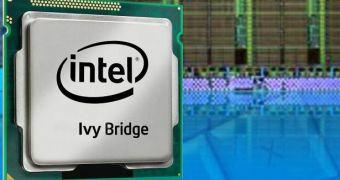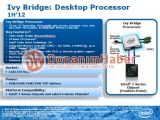While most of the computer hardware community is keenly awaiting the official launch of AMD's upcoming Bulldozer and Llano processors, Intel is also hard at work developing its future 22nm Ivy Bridge processors and some recently leaked slides come to offer us additional insight into the capabilities of these chips.
The slides appear to come from an official Intel presentation and pretty much confirm all the information that has been available until now about Ivy Bridge as well as some details regarding the TDP of the chips.
As everybody surely knows, Intel's Ivy Bridge processors are just a 22nm die shrink of Sandy Bridge, so they feature pretty much the same architecture with a few minor tweaks that should improve performance.
One of the most important changes brought to Ivy Bridge, is the addition of a new on-die GPU which packs 30% more EUs, adds DirectX 11 support and can drive up to three independent displays.
Furthermore, Intel's Quick Sync technology will be updated to sport new features and the Santa Clara company also plans to enhance the AVX instruction set.
All the other CPU specs will, however, remain the same and Ivy Bridge won't get PCI Express 3.0 support as previously thought.
Just as Sandy Bridge, the TDP of the chips ranges between 35W and 95W, depending on the CPU range and clock speeds, and the CPUs are compatible with the LGA 1155 socket, including some of the current 6-series motherboards available.
Together with the Ivy Bridge processors, Intel will also launch the Panther Point PCH which finally brings native USB 3.0 support alongside a few other manageability and security options.
According to a recently leaked Intel roadmap, Ivy Bridge is expected to launch in first quarter of 2012 and it will quickly replace Sandy Bridge in the high-end desktop space. (via Donanim Haber)

 14 DAY TRIAL //
14 DAY TRIAL // 


